Modelling
Here is a collection of common Settle3 tech support modelling questions.
Does Settle3 automatically assign any drainage conditions to layers?
No. Settle3 does not assume any drainage conditions for sand layers (layers with consolidation turned off), or any other layers, that are not specified in the drainage conditions dialog.
If you do assign drainage to the top/bottom of a sand layer, though, this drainage condition will propagate through the non-consolidating layer. Basically, if you want the sand layers to act as a drain, you need to explicitly define this drainage condition.
Can I model a pyramid-shaped load?
You can model a pyramid-shaped load using either a set of polygonal loads or an embankment.
If you go with the embankment option, the pyramid will be approximated slightly since the start and end points of the embankment cannot be the same.
How can I speed up the calculation time for multi-layer analysis mode?
The multiple layer analysis requires a lot more mathematical computation power compared to Boussinesq or Westergaard solutions. The computation time will increase even more if the number of loads in the model is increased.
If you want to decrease computation time it is recommended that you use either the query points or the line query instead of the grid query options.
How can I model sand piles?
There are two options for considering the effect of sand piles:
- The ground improvement option can be used to define a smeared improved region under footings.
- Most of the time, sand piles are used as ground improvement to reduce the consolidation settlement, and they act as vertical drains. The generation of excess pore pressure depends on the distance between the location of the sand pile installation and the points of excess pore pressure measurement. Sand piles can be modelled indirectly by using the wick drains option.
How do I determine the time to end of primary consolidation?
Settle3 can compute the time to a certain degree of consolidation in the material below an embankment using a Time Query.
To set up a Time Query, select Query > Time Points > Add Time Point and the following dialog will appear:
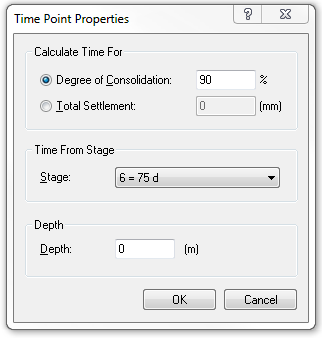
Setting up a Time Query (Time Point Properties dialog)
You choose to base the query on either Degree of Consolidation or Total Settlement and enter the value for which you’d like to calculate the required time. You also need to specify the Stage from which the time is to be calculated, and the depth at which you want the value to be checked.
After the results have been calculated, you have the option to create a new stage corresponding to the calculated time.
How can I model a ring load?
There is no direct way to enter the ring load. But, there are two indirect ways to model it.
The first is to use polygonal loads to define the inner and outer circle, but this process may be a bit cumbersome but possible with use of coordinates. Copy the coordinates of outer circle and inner circle coordinates, and make sure there's the start and end coordinates connecting the two circles as shown below:
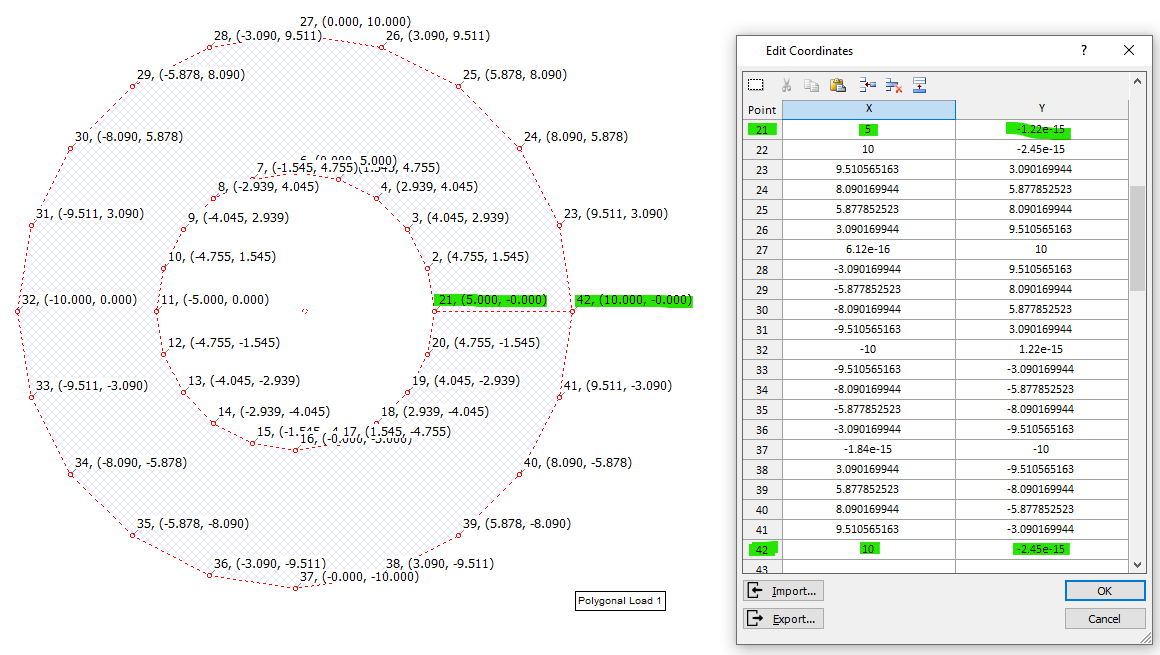
As long as the full coordinate of the polygonal load has both inner and outer circle coordinates connected by the start and end coordinate, the above ring shaped load can be applied. This method can be used for all of the other entities with coordinates such as wick drain region, ground improvement region, etc.
The second way is to use two circles to define the ring load. One circle to model the outer boundary with a positive load value and another circle with negative load to model the inner boundary.
When do I use rigid load or flexible load?
It requires some engineering judgement on when to use the flexible or rigid load. Below shows the figure of the difference between the two load types:
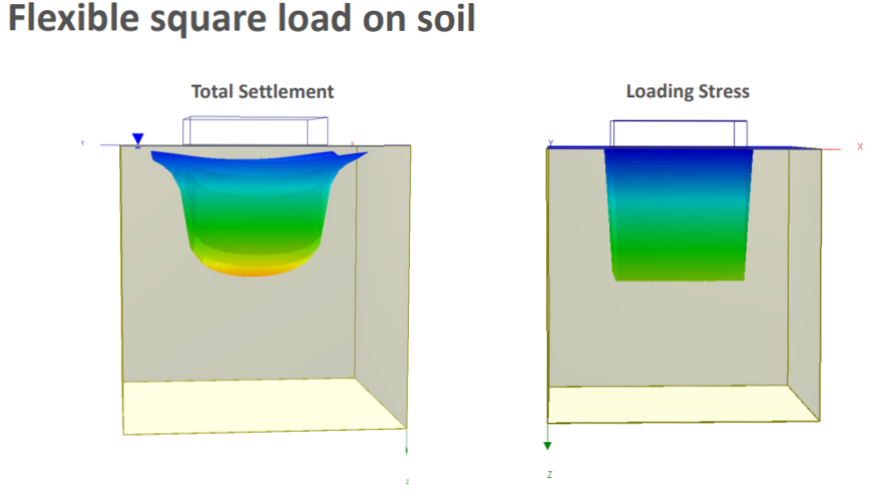
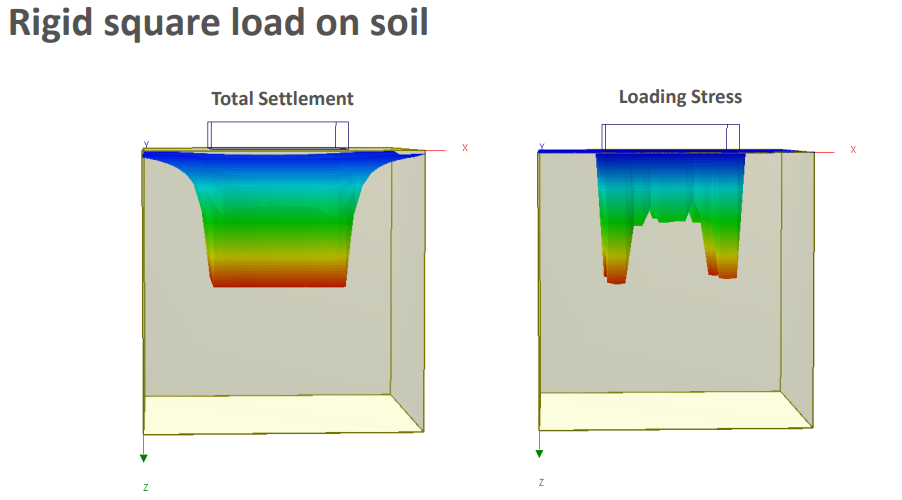
Flexible load applies planar stress throughout the loading region which then calculates the settlement from the applied stress. Rigid load on the other hand applies planar settlement which is then used to calculate the loading stress. Being aware of this underlying assumption behind the load types will allow you to use these load types with awareness and use which load type is more suitable for the analysis needs.
When should hydroconsolidation be used?
The hydroconsolidation option is only used for soils that are very sensitive to moisture content and experience swelling or collapse due to wetting.
The hydroconsolidation settlement calculation is influenced by the curve that the user provides for the pressure vs ∆ void ratio relationship for the soil. If the curve has a steep gradient, this will create large amounts of settlement.
The predicted settlement from the elastic solution does not include the effect of hydroconsolidation and is based on small strain theory which neglects such effects.
The effects of hydroconsolidation will influence all the soil layers within the hydroconsolidation region. Due to the change in strain in these layers, the settlement calculation will be affected.
Is the Unit Weight for soil in Settle3 a dry or wet density?
The unit weight that is defined in Settle3 is the moist (unsaturated, degree of saturation < 1) unit weight which will be for the material above the phreatic surface. You can also define the saturated unit weight for the material below the phreatic surface in the same material property dialog.
You should not use the submerged unit weight below the water table.
What is a typical range for the B-Bar coefficient of a clay or clayey silt?
A good place to start is with the fully saturated value of 1. Then modify the value to check how sensitive the results are to it. See the figure below, which gives typical values for clays. For undrained loading, generally B-bar is 1 for a degree of saturation of 1. There are exceptions to this, however, including highly overconsolidated clays.
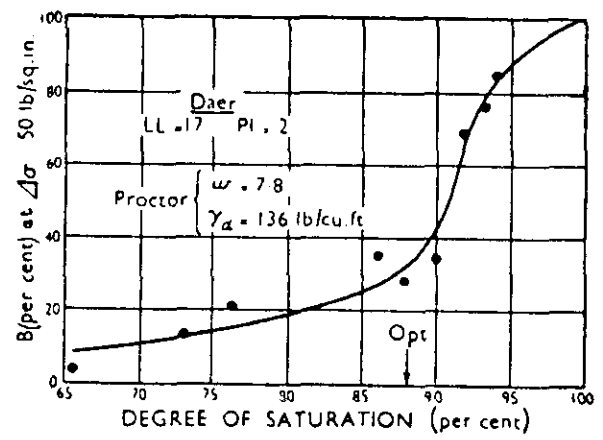
B-bar vs Degree of Saturation
See the following paper for more details:
Skempton, A.W. (1954) “The Pore-Pressure Coefficients A and B”. Geotechnique (4)143-147